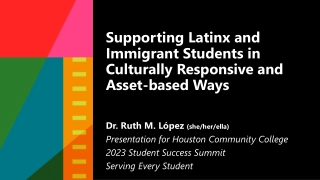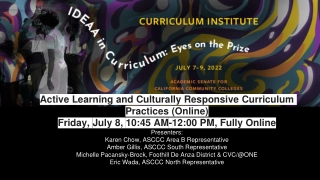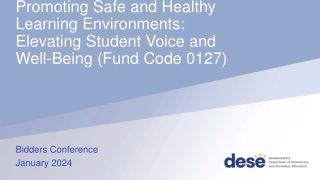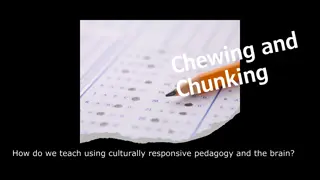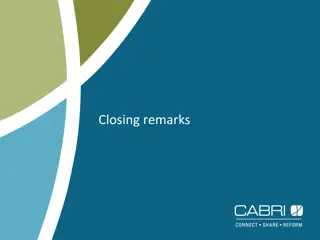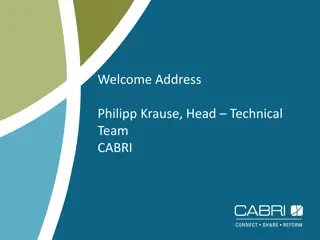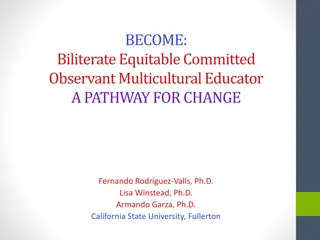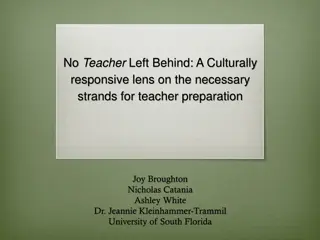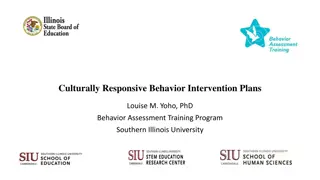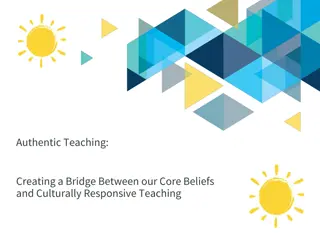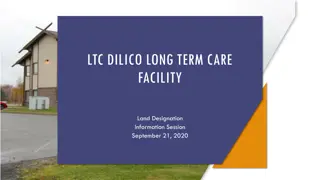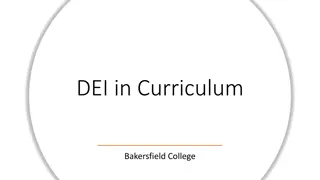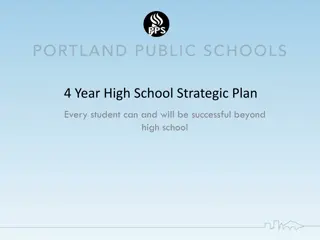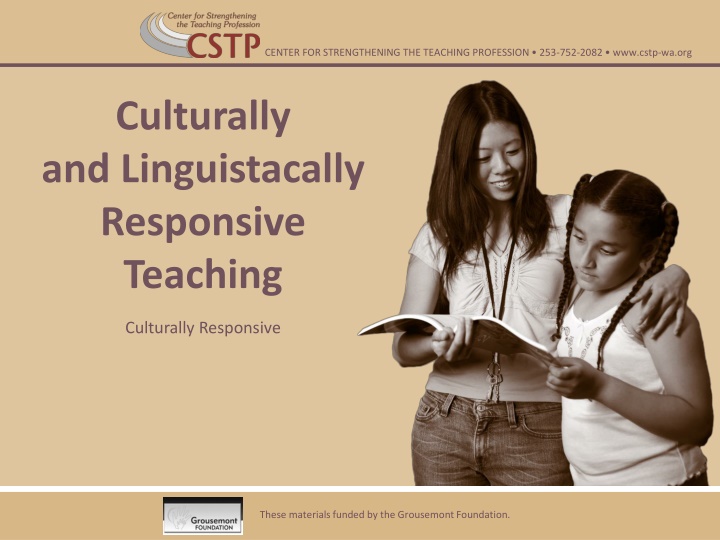
Culturally Responsive Teaching: Strategies and Principles
Explore the principles and strategies of Culturally Responsive Teaching (CRT) to create inclusive and effective learning environments. Learn about acknowledging cultural heritage, using diverse instructional methods, and fostering empowerment through language and cultural validation.
Download Presentation

Please find below an Image/Link to download the presentation.
The content on the website is provided AS IS for your information and personal use only. It may not be sold, licensed, or shared on other websites without obtaining consent from the author. If you encounter any issues during the download, it is possible that the publisher has removed the file from their server.
You are allowed to download the files provided on this website for personal or commercial use, subject to the condition that they are used lawfully. All files are the property of their respective owners.
The content on the website is provided AS IS for your information and personal use only. It may not be sold, licensed, or shared on other websites without obtaining consent from the author.
E N D
Presentation Transcript
CENTER FOR STRENGTHENING THE TEACHING PROFESSION 253-752-2082 www.cstp-wa.org Culturally and Linguistacally Responsive Teaching Culturally Responsive These materials funded by the Grousemont Foundation.
Culturally and Linguistically Responsive Teaching Geneva Gay, in Culturally Responsive Teaching Theory, Practice and Pedagogy (2004), defines culturally responsive pedagogy as the use of cultural knowledge, prior experiences, frames of reference, and performance styles of ethnically diverse students to make learning encounters more relevant to and effective for them. It teaches to and through the strengths of these students. It is culturally validating and affirming. More simply, CLR validates and affirms the home language and culture of students through the use of responsive instructional strategies, which act as bridges or enablers to acceptance, achievement, and empowerment in academic settings and mainstream culture at large. Sharroky Hollie. Pearson Longman advertisement, 2008.
Culturally Responsive Teachers Must: Acknowledge the legitimacy of cultural heritage. Use a wide variety of instructional strategies. Teach students how to praise their own and others cultural heritages Dr. Sharroky Hollie, Executive Director of the Center for Culturally Responsive Teaching and Learning
Tenets of Culturally and Linguistically Responsive (CLR) Instruction Affirm Validate Socialize Movement Holistic Spontaneous Challenge Structure Engagement Personal Ritual Contextual Dr. Sharroky Hollie, Executive Director of the Center for Culturally Responsive Teaching and Learning
Code Switching In simple terms, it is the act of moving between languages or cultural behaviors based upon the context of the situation.


